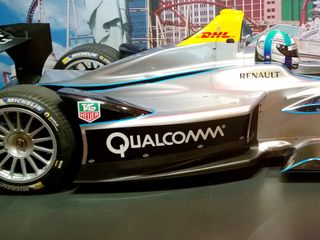Qualcomm targets entry-level segment with LTE-enabled Snapdragon 210

While Qualcomm has focused its attention on the mid-tier and the high-end segments, MediaTek has managed to grab a significant chunk of the market share in the entry-level market. With the introduction of the LTE-enabled Snapdragon 210, Qualcomm is looking to remedy that and take the fight to MediaTek in the budget smartphone segment.
The highlight of the Snapdragon 210 is LTE Category 4 connectivity, along with dual-LTE connectivity for dual-SIM handsets. The SoC features a quad CPU along with an Adreno 304 GPU, and supports 720p displays along with 1080p playback and hardware HEVC (High Efficiency Video Coding). The chip also supports up to 8 MP imaging sensors with Zero Shutter Lag, HDR, autofocus, auto white balance and auto exposure. Another feature on the Snapdragon 210 is Qualcomm's Quick Charge 2.0 technology, through which you can charge your battery 75 percent faster.
According to IDC, 40 percent of smartphones in China in Q3 2014 featured a MediaTek SoC, versus 27 for Qualcomm, with a majority of devices priced at under $200. A similar scenario is begin played out in India, with most handsets from local vendors like Micromax, Karbonn and Lava featuring MediaTek's range of affordable SoCs. With LTE networks set to go mainstream starting later this year, the Snapdragon 210 will be a viable option for handset vendors, with Qualcomm targeting sub-$100 devices with the SoC.
The most affordable LTE-enabled WP handset to date is the Snapdragon 400 toting Lumia 635, and with the launch of the Snapdragon 210, the stage is set for even more affordable WP handsets with LTE connectivity, especially in emerging markets like India and China. Expect to see smartphones carrying the SoC sometime in the first half of 2015.
Source: Qualcomm; Via: Engadget
Get the Windows Central Newsletter
All the latest news, reviews, and guides for Windows and Xbox diehards.

Harish Jonnalagadda is a Senior Editor overseeing Asia for Android Central, Windows Central's sister site. When not reviewing phones, he's testing PC hardware, including video cards, motherboards, gaming accessories, and keyboards.
